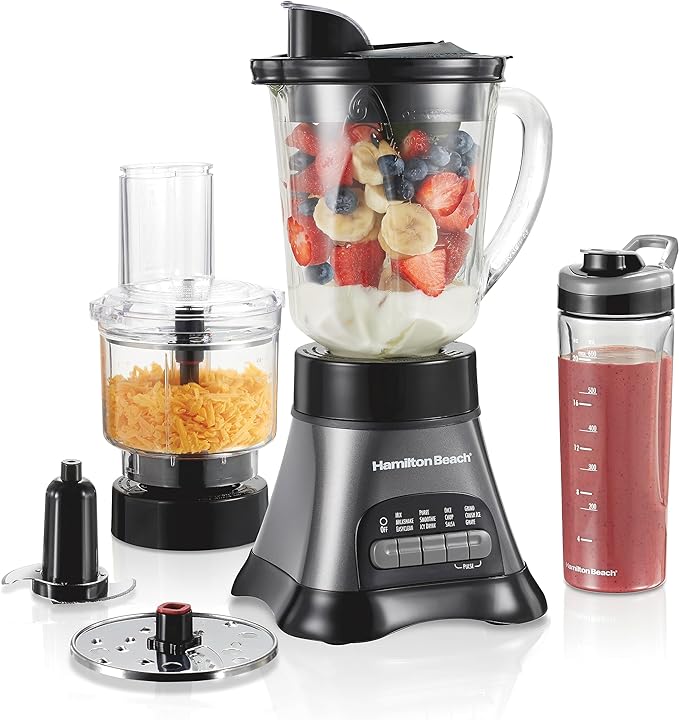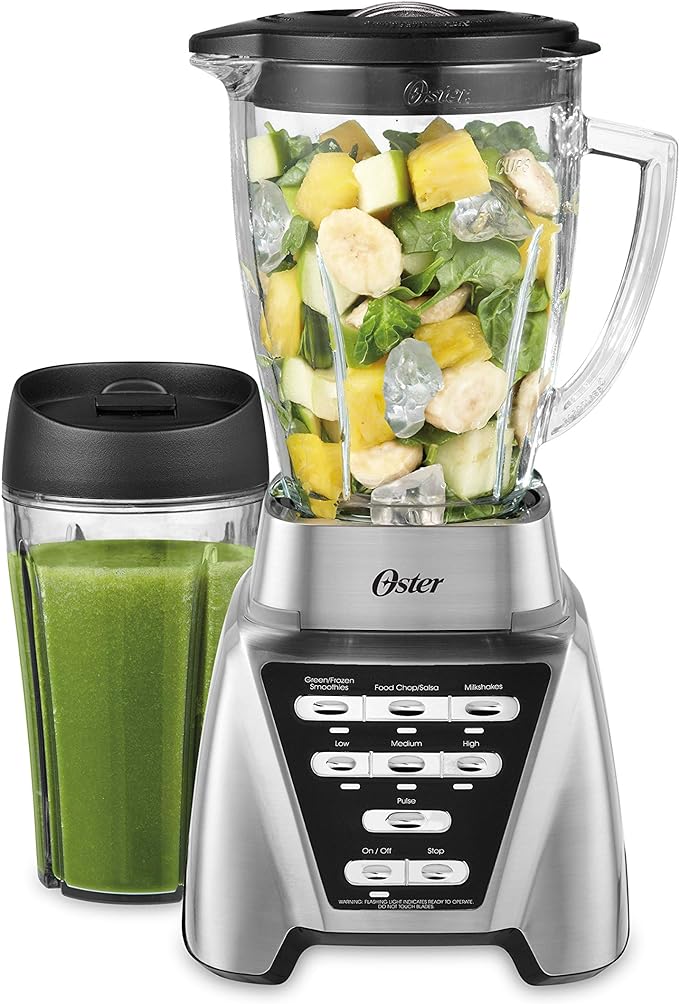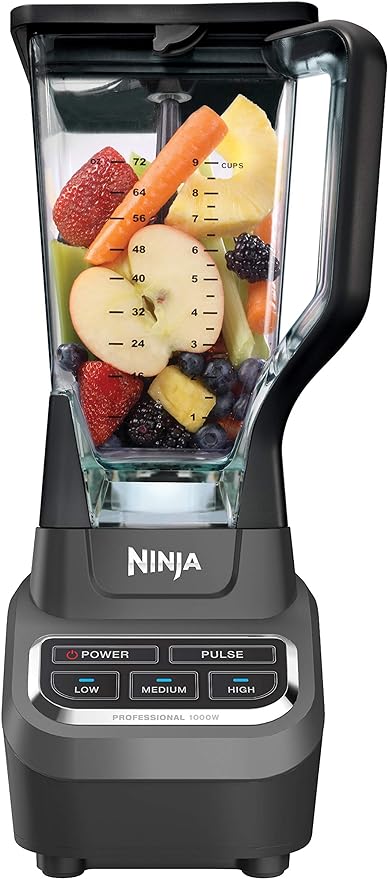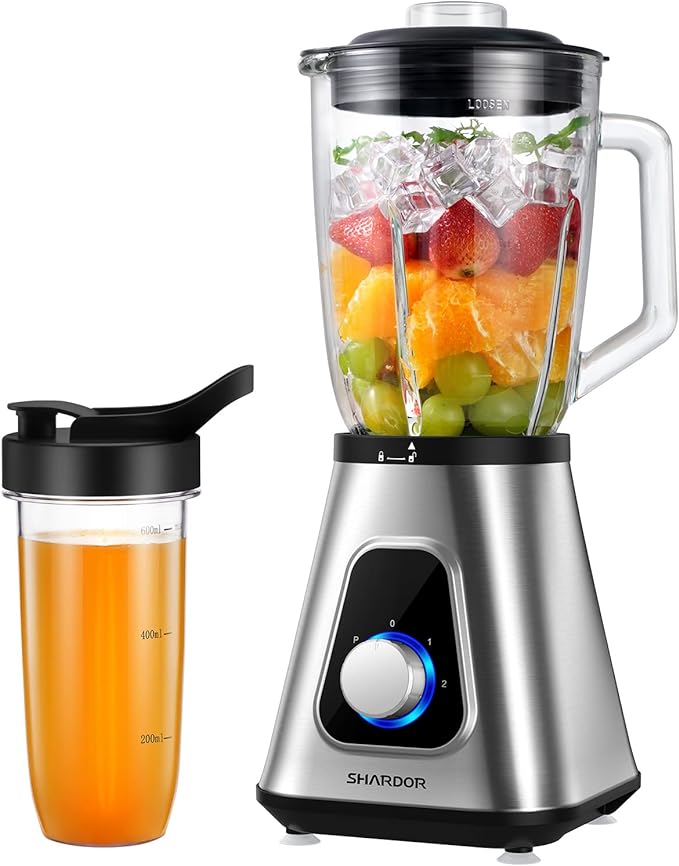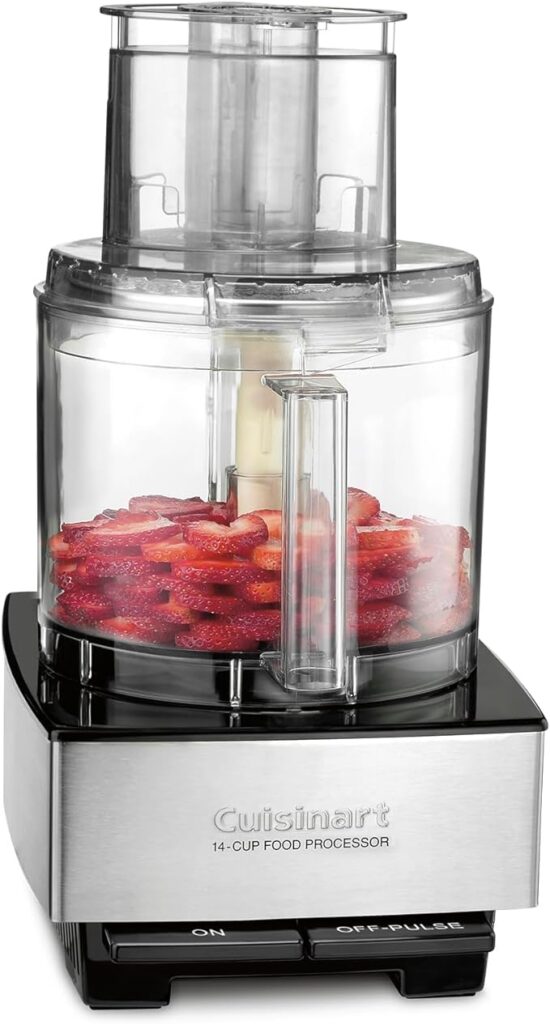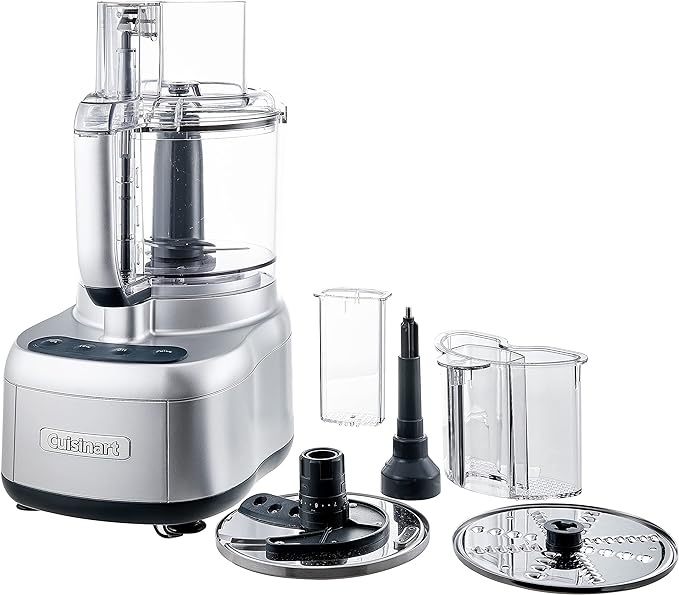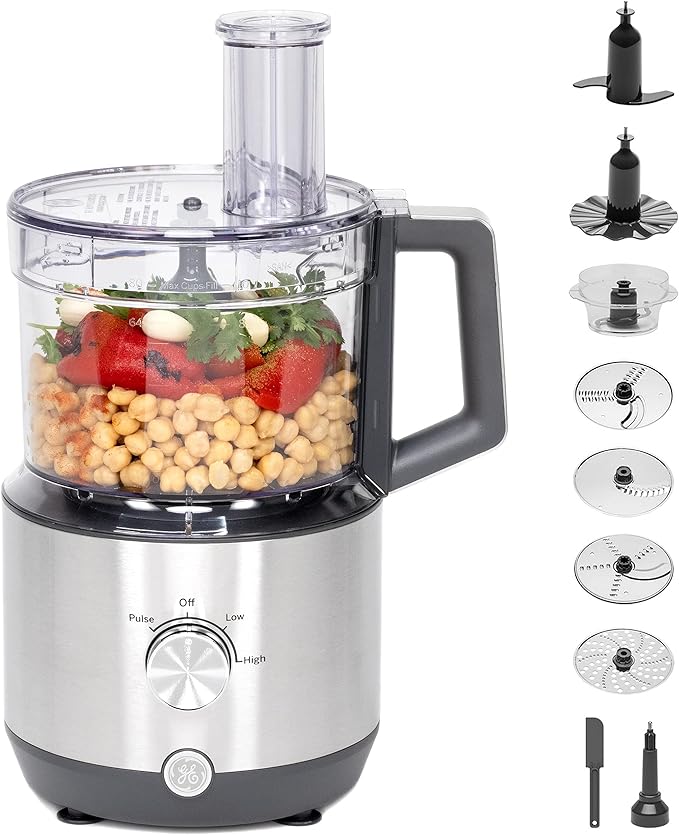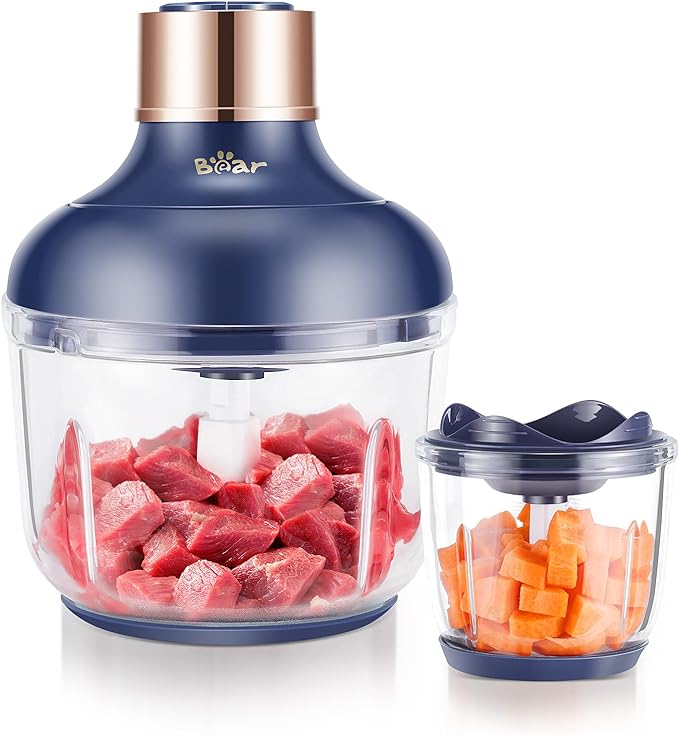We independently evaluate all recommended products and services. If you click on links we provide, we may receive compensation. Learn more.

Food processors and blenders excel at different tasks.
As much as we’d like to tell you that you can confidently invest in either a top tested food processor or best performing blender, the truth is that they’re each good for different things so it depends on your needs.
Below, we share how food processors and blenders work, what they’re each best for and if and when you can use them interchangeably. We also offer tips on how to best use a food processor.
How food processors work
| PROS Chops evenly Comes with a lot of useful attachments | CONS Pricey |
Food processors have s-shaped blades that chop and puree food. The blade sits in a round workbowl that has tall, straight edges and is placed on top of a sturdy base. The bowl is typically clear so you can see inside. They come in an assortment of sizes, from mini food processors around two to five cups and are great for small chopping tasks, all the way up to large 14- or 16-cup sizes.
Food processor lids traditionally are designed with a feed tube, often with a drizzle hole, that allows you to add liquid to the bowl while the unit is running. This allows purees, like roasted red pepper hummus, to get thick, airy and creamy if you want to add extra oil. The feed tube is also used to guide food into the workbowl so you can slice and shred food, too, with the right attachment. Some feed tubes have multiple sized parts that you can use based on the size of your food, i.e. use the small hole for carrots and celery and the wider one for cheese. The more snug your food fits inside the tube, the more even slices you’ll get.
What works best in a food processor?
Food processors are great at chopping. Think: garlic, onions, herbs, nuts, veggies for mirepoix and even making chop meat and salsas. The more you process the food, the finer it’ll get. The pulse button located on most food processors is a great way to control the size of your chop. It also helps food chop more evenly because the stop and go action acts like a mixer of sorts — the heavier foods fall to the bottom when the blade stops so they can get chopped up, too.
In addition to chopping, food processors are great at making purees, dips and sauces with limited amounts of liquid, like baby food, hummus and an easy pesto. The results are typically super smooth and airy; plus, you can scrape down the sides easily to serve every last bit.
The most unique thing about food processors, especially in comparison to blenders, is that almost all come with a slicing and shredding disc so you can easily make dishes like scalloped potatoes or our our favorite latke recipe. Some advanced versions comes with thick and thin settings for each, or even adjustable settings so you can slice your tomato as thin as you’d like. The latest food processors can dice food into perfect little cubes for salads, sangria or ice cream toppings; others can spiralize and some even come with juicing abilities.
Food processors are also good for making different types of dough. They’re perfect for cutting butter into flour so you can make a flaky pie dough easily. They can even make pizza dough and pasta dough!
How blenders work
| PROS -Made great milkshakes and frozen margaritas in our tests -Sturdy base | CONS -The carafe has a 6-cup capacity which is a little smaller than many blenders we tested that were around eight cups |
Like food processors, blenders have blades that chop food but the blades are positioned differently and they usually have more prongs. Instead of being flat like a food processor’s, they point upwards and help create a whirling effect in the blender’s jug. They come in an assortment of sizes, from personal-sized blenders to about eight cups.
Blender jugs are commonly made out of a strong plastic. In the past, many were made of glass but glass is less used these days. Some blender brands like Vitamix have started to make make stainless steel jugs.
Blenders benefit from the use of liquid. All of the blender lids we’ve encountered (not including personal-sized blender cups) have a removable cap so you can add liquid as you go to prevent jams.
What works best in a blender?
Blenders are ideal for liquids. They’re great for making smoothies, frozen drinks, soups and more. High-powered blenders can also be used for hummus and nut butters but they usually require some help from more liquid or the blender’s tamp. They’re also a little trickier to scrape out compared to a food processor bowl since blender blades are typically fixed.
High-powered blenders can also be used to make dough in a pinch like a food processor or mixer. Some fun blender uses include making an easy hollandaise sauce — that’s something a good processor can’t do!
Can you use a food processor in place of a blender and vice versa?
While each can stand in for each other from time to time, it’s best to use to use them for what they excel at so you can get the best results and most enjoyable user experience — ahem, no leaking when you’re trying to blend a soup.
- Food processors and blenders can both chop, but food processors do it more evenly and they’re less likely to bruise delicate herbs.
- They can also both make purees like hummus, salsas and nut butters but food processors make purees more effectively, require less liquid and are easier to scrape out of the bowl so you can enjoy every last bit.
- You shouldn’t blend soup in a food processor. It’s not designed to be leakproof like a blender jar and can easily overflow. Plus, not all food processor blades stay in place when you turn them upside down so ingredients can spill when you’re transferring them to a serving bowl.
- You also shouldn’t crush ice in a food processor. It’s harsh on the blade and motor, and the base will likely jump around.
- You can’t slice or shred in a blender, unless your blender comes with slicing or shredding attachments, which is highly uncommon.
- You can make different types of dough in both a food processor and a blender, but will likely get more evenly kneaded results in a food processor.
- Chopping meat is best in a food processor as well. It’ll turn out much more even with less crevices to get stuck in and clean out.
What is the best food processor and blender?
Our top-tested food processor is the Breville Sous Chef while our top-tested blender is the Vitamix E-310. Both excelled in their specific tests that focus on performance and ease of use. The Breville chopped evenly and comes with an assortment of versatile accessories, and the Vitamix E-310 made some of the creamiest milkshakes and smoothest frozen margaritas.
Cuisinart’s Smartpower Duet is our best-rated food processor and blender combo. It did a great job making smoothies in addition to mincing parsely, shredding carrots and slicing pepperoni in the food processor attachment.
The bottom line
Think of a food processor as a kitchen assistant — chopping, pureeing, making pastry dough, slicing, shredding and even dicing or spiralizing — while a blender is meant primarily for smoothies and drinks.



